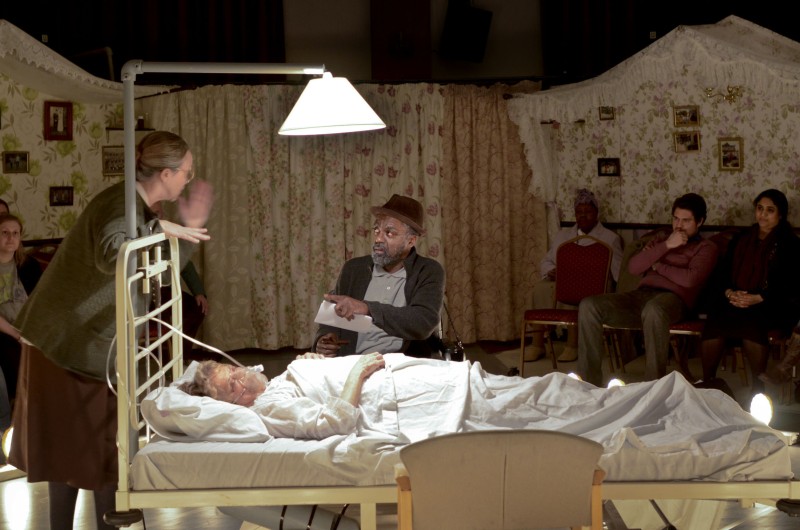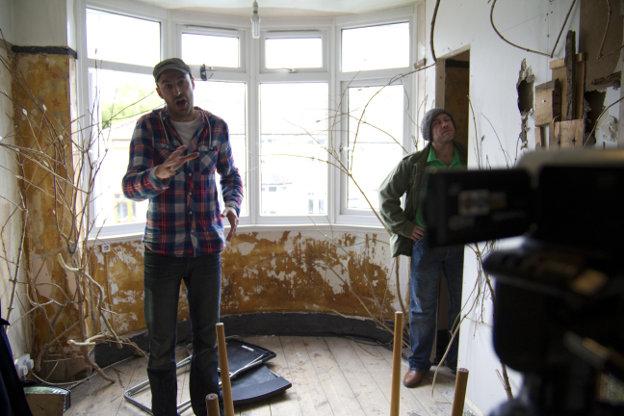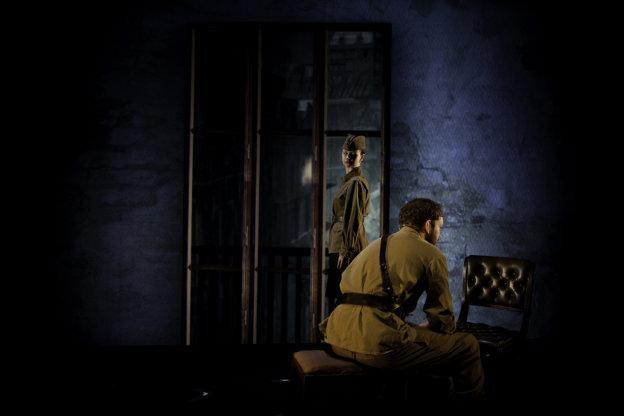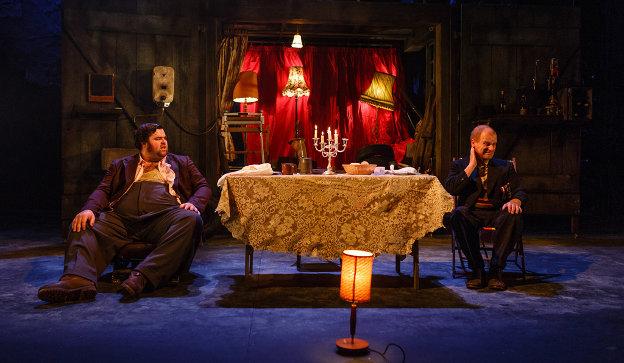 This latest production from Bradford-based Freedom Studios, in a collaboration with Deptford-based Entelechy Arts, delves into the complexities of ageing in contemporary Britain and aims to ask pertinent questions as to how ageing is both perceived and experienced – and how we should approach it. Their last major piece of community theatre was The Mill – City of Dreams (2011), a promenade production performed in an abandoned textiles mill. Home Sweet Home, although performed in Bradford’s Ukrainian Centre, is significantly less dependent on its venue, but it owes a considerable amount to the lives of those older people, from Bradford and elsewhere, whose stories, gathered over two years of research, form the basis of the production.
This latest production from Bradford-based Freedom Studios, in a collaboration with Deptford-based Entelechy Arts, delves into the complexities of ageing in contemporary Britain and aims to ask pertinent questions as to how ageing is both perceived and experienced – and how we should approach it. Their last major piece of community theatre was The Mill – City of Dreams (2011), a promenade production performed in an abandoned textiles mill. Home Sweet Home, although performed in Bradford’s Ukrainian Centre, is significantly less dependent on its venue, but it owes a considerable amount to the lives of those older people, from Bradford and elsewhere, whose stories, gathered over two years of research, form the basis of the production.
A moving and intimate production, Home Sweet Home begins with the spectators being greeted by hosts (‘older emerging artists from London, Bradford and Stockton’) who usher us through the curtains into a square, each side of which is set out as a pair of living-rooms. Seated in a living room, we are offered a cup of tea and a biscuit from the tea trolley as our hosts chat with us about where we’ve come from, if we had any problems finding the venue, would we like another biscuit? The hosts then become the chorus who guide us through the play – introducing scenes, rounding them off, sometimes singing, sometimes dancing, even performing magic tricks for us.
The stories making up the play’s central narrative are performed by professional actors – and there is a stark contrast between their highly polished and nuanced performances and the more straightforward and naive performances of the chorus. But therein lies much of the depth and the delight in this play – where the sharpness, the rawness, of the lives portrayed and issues explored bite more keenly and are exposed more acutely by the simplicity, charm and warmth of a chorus who stand next to us – outside of the action – smiling and totally unfazed either by the events of the play or by their own occasional losses of memory, the awkward silences as they strive to remember their lines.
Home Sweet Home, written by Emma Adams, looks beyond the label of ‘old age’ and examines how our systems and thought processes so often work against older peoples’ desire to live with dignity and independence. The conflicts this produces are played out before us as we watch Moses (originally from the Caribbean) attempting to escape his care home to find out what has happened to his friend Mary. He recruits Rosa (originally from Ukraine), a new and reluctant resident of the same care home, who simply wants to go home. Meanwhile, Barbara (played by Jean Rogers) fights to know the truth behind her husband Ron’s scalded hand, and care-worker Iffty (played by Mani Dosanjh) is torn between his natural instinct to treat the residents as human beings and the demands of an institutionalised system that treats people as objects to be controlled. Outstanding performances come from Phillipa Peak as residential care home manager Jo, who spends much of the play entangled in telephone lines that keep her firmly attached to the filing cabinet that is wheeled on and off stage, and Balvinder Sopal who, as Iffty’s late grandmother, Daadi, haunts Iffty’s life, interrupting it in a series of comic interventions that force him to confront the confusions created by his job. Under Tom Wright’s direction, Jo’s symbolism, literally tied to the phone and the filing cabinet and her increasingly anxious twitching movements as she responds to events like a frightened animal caught in a trap, make her dilemmas – and, by extension, all those whose job it is to organise, manage and work in residential care – as central to this production as those of the residents and relatives whose experiences form the bulk of the narrative.
At times, the attempt to immerse the audience in the world of the play felt a touch heavy-handed. Being offered bottles to smell at various points (boiled cabbage, disinfectant) and, at other times, family photo albums to look at, these moments, far from immersing me in the play and intensifying my engagement with it seemed to distract and take me away from it. On the other hand, the inclusion in the photo albums of brain scans showing the steady advancement of Alzheimer’s were revelatory: I was genuinely shocked to see the huge physical changes in the brain as Alzheimer’s develops. It was difficult, on these occasions, not to look up from the albums and see the character of Ron – a retired former tea-blender, suffering from Alzheimer’s, who simply wants to pour his own cup of tea – with fresh understanding and sympathy.
A timely, engaging and provocative play, Home Sweet Home challenges assumptions that old age is necessarily something to be dreaded and feared. There is charm, punch, plenty to challenge us here – and always another cup of tea and a biscuit. The production returns to Bradford in September before moving on to Deptford and Stockton.





